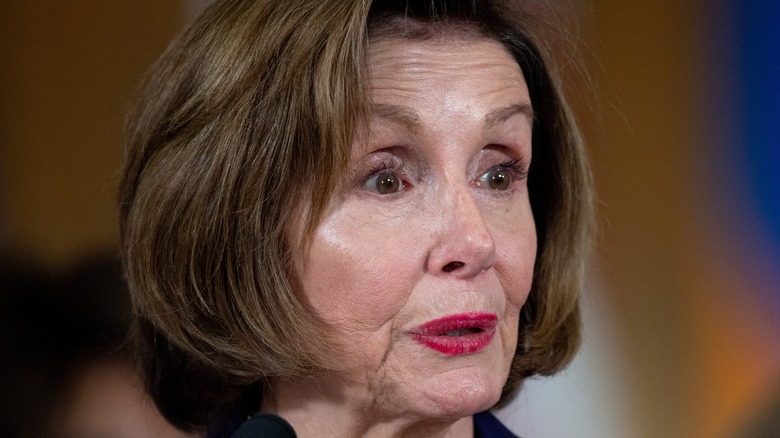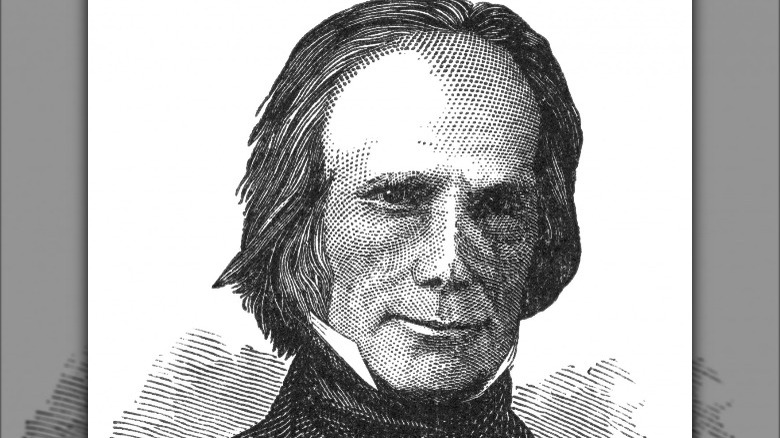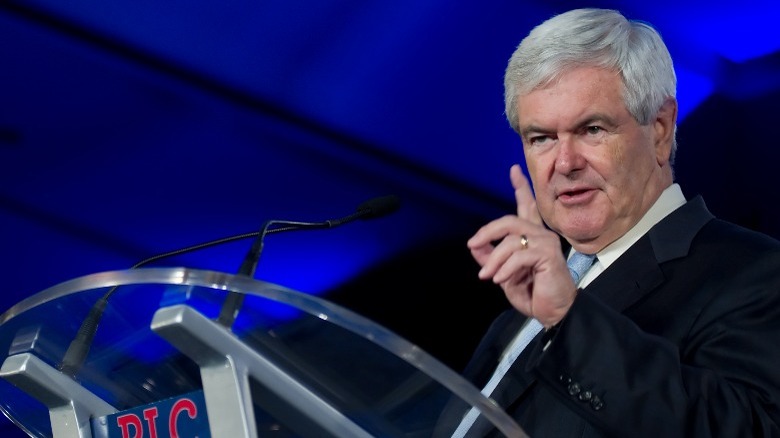Why Do We Have A Speaker Of The House In Congress?
On November 17, 2022, Rep. Nancy Pelosi announced that she would not be seeking a leadership position in the next session of Congress, set to begin in January 2023. As reported by The New York Times, Pelosi, 82, who has led the House Democrats for two decades and made history in 2007 when she became the first woman to hold the position of Speaker of the House, said in a speech on the House floor, "For me the hour has come for a new generation to lead the Democratic caucus that I so deeply respect. And I am grateful that so many are ready and willing to shoulder this awesome responsibility." Pelosi served as Speaker of the House from 2007 to 2011 and again from 2019 until the present. Per the biography on her House of Representatives website, she has represented California's 12th district for 35 years and also served as Democratic House Whip.
The position of Speaker of the House dates back several centuries, according to the History, Art & Archives department of the House of Representatives. In 14th century Great Britain, the British House of Commons had a speaker elected by the Commons whose job it was to represent the Commons to the sovereign as well as represent the sovereign within the Commons. This changed in the 17th century, at which point the speaker was no longer expected to represent the king or queen in addition to the Commons.
The Speaker of the House position was established by the Constitution
The position of Speaker of the House was established in Article I, Section 2 of the United States Constitution (per the U.S. Census Bureau), which specifies, "The House of Representatives shall choose their Speaker and other Officers; and shall have the sole Power of Impeachment." In addition to fulfilling their duties to their state constituents, the Speaker must also preside over the House's business and administrative duties as well as lead and act as spokesperson for the majority party within the House. The speaker is also second in the presidential order of succession, following the vice president.
The first Speaker of the House, Frederick A.C. Muhlenberg of Pennsylvania, was elected to the first Congress of 1789 and served two non-consecutive terms. Per the History, Art & Archives department of the House of Representatives, delegates from Pennsylvania nominated him because they wanted someone from their state in a position of power alongside Virginia's President George Washington, Vice President John Adams of Massachusetts, and New York's Chief Justice John Jay. The delegates also hoped that Muhlenberg would influence the government to locate the national capital in Pennsylvania, though he did not.
Henry Clay (above) of Kentucky was the first Speaker of the House to come to national prominence. He served in the 12th Congress between 1811 and 1813. He was already known as a Senator and the Speaker of the Kentucky House of Representatives. He was known for his charisma and vocal preference for national politics over regional ones.
The role of Speaker of the House has changed over the years
According to The Conversation, the power held by the Speaker of the House has "ebbed and flowed" over the years. In 1910, House Speaker Joseph Cannon, a Republican, amassed so much power that, per Britannica, he used it in a wildly-partisan manner, benefiting his party. This led other representatives to pass a resolution banning the Speaker from the House rules committee, thus containing Cannon's ability to favor his party in such an outsize manner. Things eventually swung the other way after committees were seen as having too much power after a series of reforms passed through Congress, thus returning power to the Speaker.
Between 1977 and 1995, a series of Democratic Speakers of the House, Tip O'Neill, Jim Wright, and Tom Foley, were noted for their abilities to drum up loyalty and expand leadership networks within their party, while Republican Newt Gingrich (pictured above), who became Speaker in 1995, announced that he was leading a movement, per The Conversation, "seeking to do nothing less than reshape the federal government along with the political culture of the nation." The year before, he co-authored the Republican Contract With America with fellow representative Dick Armey, in which they laid out the Republican party's plans if they became the majority party in Congress, which is credited with bringing "unity and focus" to the party (via Teaching American History).


